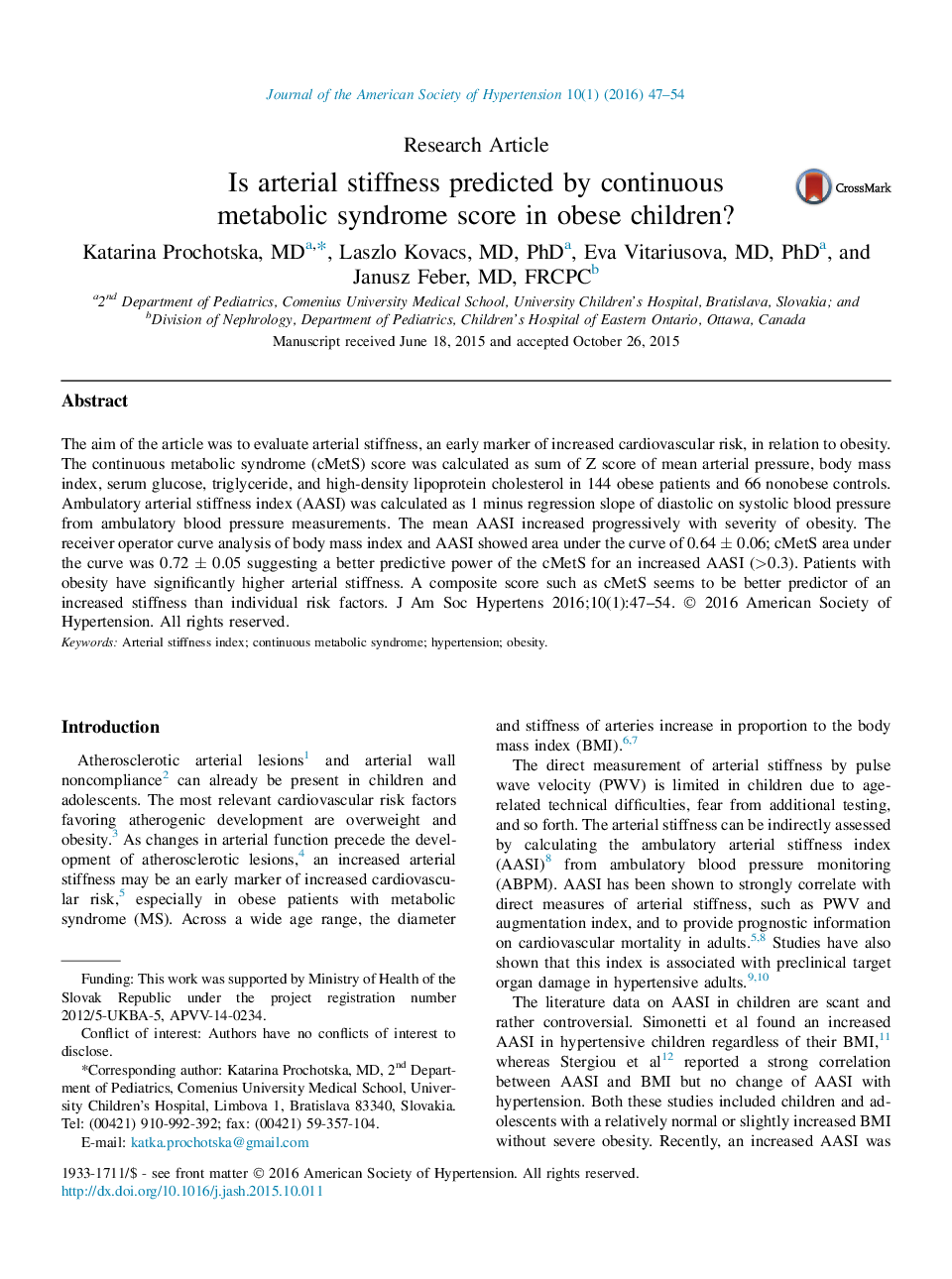| Article ID | Journal | Published Year | Pages | File Type |
|---|---|---|---|---|
| 5983607 | Journal of the American Society of Hypertension | 2016 | 8 Pages |
â¢Ambulatory arterial stiffness index increases with severity of obesity in children.â¢Continuous metabolic syndrome predicts an increased arterial stiffness.â¢An abnormal arterial stiffness is predicted by continuous metabolic score more than 4.567.
The aim of the article was to evaluate arterial stiffness, an early marker of increased cardiovascular risk, in relation to obesity. The continuous metabolic syndrome (cMetS) score was calculated as sum of Z score of mean arterial pressure, body mass index, serum glucose, triglyceride, and high-density lipoprotein cholesterol in 144 obese patients and 66 nonobese controls. Ambulatory arterial stiffness index (AASI) was calculated as 1 minus regression slope of diastolic on systolic blood pressure from ambulatory blood pressure measurements. The mean AASI increased progressively with severity of obesity. The receiver operator curve analysis of body mass index and AASI showed area under the curve of 0.64 ± 0.06; cMetS area under the curve was 0.72 ± 0.05 suggesting a better predictive power of the cMetS for an increased AASI (>0.3). Patients with obesity have significantly higher arterial stiffness. A composite score such as cMetS seems to be better predictor of an increased stiffness than individual risk factors.
Graphical AbstractDownload high-res image (69KB)Download full-size image
